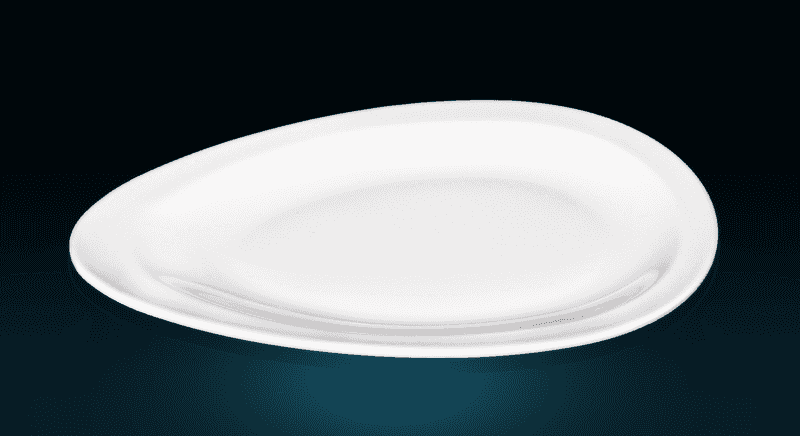Boiling water can really sterilize tableware
2024-06-05
Can boiling water really sterilize tableware?
During the long vacation, one meal, two meals, three or four meals are indispensable.
When it comes to a dinner party, what is the first thing you do before dinner?
handwashing?Photograph?Or hot dishes?

More than a dozen people moved in unison, in one go, as if performing pre-dinner etiquette.
Bowls, chopsticks, cups, and saucers are not let go, they must accept a high temperature baptism......
It sounds clean and hygienic, but can you really disinfect and sterilize tableware with ordinary boiling water? Come on, let's explore the truth together.
Does boiling water really work?
First of all, let's analyze what microorganisms generally remain on the tableware?
The most important ones include: bacteria (Staphylococcus aureus, Salmonella and Escherichia coli, etc.), viruses (Hepatitis A virus, hepatitis B virus, Norovirus, etc.), molds (fungi) and spores.
And these microorganisms may have a certain degree of harm to the human body.
Does scalding really kill these microbes?
Staphylococcus aureus
Under certain conditions, enterotoxins can be produced, which can cause nausea, vomiting, stomach cramps and diarrhea and other symptoms of food poisoning.
It has a certain tolerance to high temperature, and it can be completely killed at a high temperature above 80°C for 30 minutes.
However, while Staphylococcus aureus itself is not heat tolerant, the toxins are very hardy in the face of heat, and it is the bacterial toxins, not the bacteria themselves, that cause food poisoning.
Therefore, even if most of the Staphylococcus aureus is killed, if the tableware has been contaminated by a large number of bacteria, there may also be toxins.
salmonella
It is the largest cause of food poisoning incidents in our country. Due to its widespread existence, it is very easy to contaminate tableware.
After infection, there will be vomiting, abdominal pain, watery stool (yellow green), and severe cases will have chills, convulsions and even coma.
However, Salmonella is relatively heat-labile, and most of them can be killed in 15-30 minutes at a temperature of 55°C-60°C.
Escherichia coli
A kind of bacteria that is often heard, it exists in various places of our lives, such as in water, in food, and even in the body.
It is a normal resident bacterium in the intestinal tract of humans and animals and can cause acute diarrhea only in special cases.
Escherichia coli is also not tolerant to high temperature, and is generally killed within 1 minute at a temperature of 75°C.
Bacterial spores
Simply put, it can be understood as the dormant body of bacteria.
It has strong adaptability, can resist unfavorable factors such as acid and drought, and is very heat-resistant.
Therefore, under normal circumstances, boiling water cannot kill them.
mold
A temperature of 70-80°C is sufficient to kill most molds.
But fungal spores (dormant fungi) and toxins produced by some fungi cannot be killed at high temperatures.
Therefore, once the tableware is moldy, don't think about ironing it to solve the problem.
Virus
Viruses that may be present on tableware include norovirus, hepatitis A, and hepatitis B viruses.
Among them, norovirus is easy to eliminate, but hepatitis A and hepatitis B viruses need hot water at 100°C.
The key to killing microorganisms lies in temperature and time. High temperature and long enough time can effectively kill most microorganisms.
But under normal circumstances, the temperature of the water provided by restaurants is often low, and many people only heat tableware for a dozen seconds at most.
Therefore, scalding tableware with boiling water before eating does not guarantee to kill most pathogenic microorganisms.
If there is really any effect, it is that the water flow can take away some bacteria, but the effect is limited.
However, although it looks terrible, if it is a restaurant that meets the hygiene standards, the microbial residues are generally qualified, and it will not cause any harm to the human body if it is not hot. If the sanitation is not up to standard, the above microorganisms may remain, which is not good for health.
What should I do with the tableware when I go out to eat?
First of all, try to go to restaurants that meet hygiene standards.
Secondly, if you have children, you can bring your own set of tableware.
Finally, if you insist on ironing tableware, try to use 100°C water for 1-3 minutes or heat at 80°C for 10 minutes.
When eating at home, pay attention to the following points when placing and using tableware:
Cleaning of tableware
Do not stack them until they are completely dry, as this can increase bacterial growth.
Disinfect and sterilize tableware regularly
"Boiling disinfection" method: put the tableware in boiling water and boil for 5-10 minutes.
"Steam disinfection" method: Put the tableware into the steam cabinet, adjust the temperature to 100°C, and sterilize for 5-10 minutes.
How to prevent the growth of bacteria in life?
1) Before making food, hands should be thoroughly cleaned, especially under the nails;
2) Try not to make food when you have rhinitis or eye infection;
3) When there is a wound on the hand, do not make food, and do not touch food;
4) Keep the kitchen and dining area clean and hygienic;
5) If the prepared food is to be stored for more than 6 hours, it should be refrigerated in a refrigerator below 4°C as soon as possible;
6) Don't use dishcloth as a "universal cloth";
According to the survey, the total number of bacteria per gram of tablecloth is as high as hundreds of thousands, including pathogenic bacteria such as Escherichia coli and Salmonella, so try not to wipe the tableware with a rag.
To sum up, there is no harm in rinsing tableware with hot water when eating out, but don't expect obvious disinfection and sterilization effects.
so If the water is not hot enough and the time is not long enough
Boiling water to scald tableware is basically useless
If you want to eat safely, rest assured
Or choose a clean and hygienic restaurant



